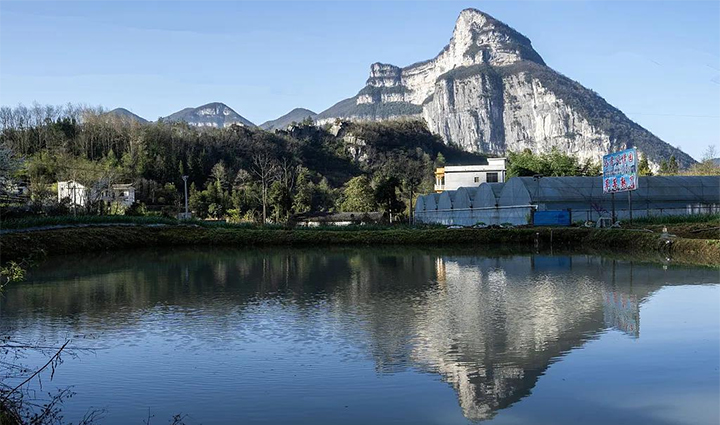


Enshi Grand Canyon-Tenglongdong Cave UNESCO Global Geopark, Hubei province, Mar 29. [Photo/VCG]
Changbaishan Global Geopark is to present its priceless geological wonders to global audience, following its listing in the Global Geoparks Network by the United Nations Educational, Scientific and Cultural Organization (UNSECO). The park, along with the other five Chinese geoparks, received the prestigious listing by UNESCO's executive board at the end of March 2024. Covering 2,723 square kilometers in southeastern Jilin, the geopark became the first one in the province to join the list.
Renowned for its quaternary volcanic landforms, the park boasts a wealth of geological remnants including giant compound volcanic cones, millennium-old eruptions and their deposits, debris canyons, and giant crater lakes such as Tianchi. With over 380 craters, it holds the distinction of being the region with the biggest number, greatest density and widest distribution of volcanic rocks in East Asia.
"Volcanoes are mysterious natural phenomena and a fascination for young students," said Pan Bo, a researcher from the Institute of Geology of the China Earthquake Administration. Pan said, "The park is well-positioned to leverage this opportunity to enhance research-based study and popular science education."
Serving as an important ecological barrier in Northeast China, Changbai Mountain Nature Reserve was established in 1960. In 2009, it was approved by the then Ministry of Land and Resources as the fifth batch of national geoparks. Zhang Rongjie, director of the park's science and education department, emphasized the unique qualities of Changbai Mountain. "There are 1,586 species of wild animals and 2,639 species of wild plants, including 50 nationally protected wild animal species and 11 protected wild plant species," he said. "The significance and value of its ecosystem's protection is important worldwide," Zhang said.
In 2020, the park started applying for membership in UNESCO Global Geoparks. A team was set up to carry out field surveys of geological resources, construction of the database and preparation of the application materials. "With a total investment of over 33 million yuan ($4.5 million), the committee made full efforts in key tasks of infrastructure construction, enhancement of management capabilities and preparation of planning materials," said Zhao Yueming, director of the park's external cooperation department.
They upgraded the Changbaishan Museum of Natural History, adding geological-themed elements, ore specimens and folk exhibits to highlight the unique geological and cultural characteristics. "When parents take their children, they seek no longer simple leisure activities but also knowledge enrichment," Pan said. The upgrade is a testament to the park's focus on educational tourism. Moreover, the park launched promotional activities focused on geological science among local schools, drawing the participation of over 710 students and further solidifying its commitment to educational outreach.
Founded in 2004, the Global Geoparks Network is devoted to developing models of best practice and setting high-quality standards for territories that integrate the preservation of geological heritage with strategies for regionally sustainable economic development. The other five Chinese geoparks announced on Wednesday are Enshi Grand Canyon-Tenglongdong Cave UNESCO Global Geopark in Hubei province, Linxia UNESCO Global Geopark in Gansu province, Longyan Geopark in Fujian province, Wugongshan Geopark in Jiangxi province and Xingyi Geopark in Guizhou province.
Author: Liu MingTai and Zhou HuiYing
Source: <https://www.chinadaily.com.cn/a/202403/30/WS660751aea31082fc043bf85c.html>
Edited by Liang Xiuchun